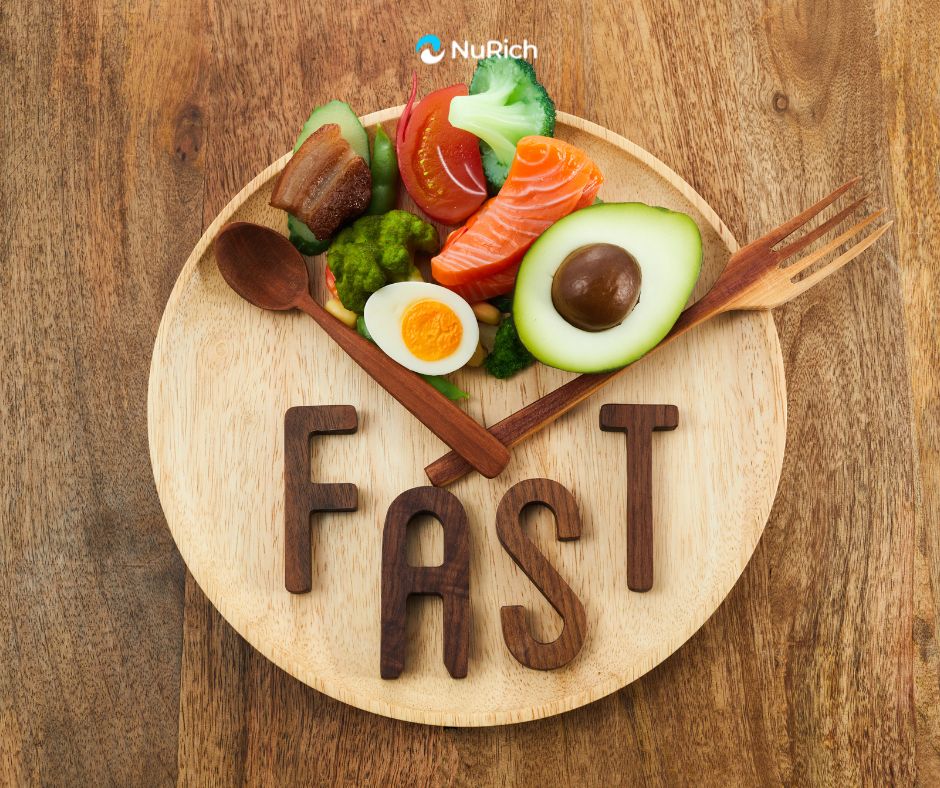🔄 Different Types of Intermittent Fasting
Understanding your options can help tailor IF to your lifestyle:
-
16:8 Method – Fast for 16 hours, eat during an 8-hour window (e.g., 12 p.m. to 8 p.m.)
-
14:10 Method – Gentler option, fast 14 hours, eat during 10-hour window
-
5:2 Diet – Eat normally for 5 days, limit intake to ~500–600 calories on 2 non-consecutive days
-
Eat-Stop-Eat – 24-hour fast once or twice a week
-
Alternate-Day Fasting – Fast every other day
-
OMAD (One Meal a Day) – Eat one meal within a 1-hour window
-
Time-Restricted Eating (TRE) – Focuses on eating within a consistent daily window
Each method varies in intensity, so starting slow is recommended.
🔍 How It Works: The Science Behind Fasting
When you fast, the body shifts from burning glucose to burning fat. This state is called metabolic switching. During fasting:
-
Insulin levels drop, allowing stored fat to be used as energy
-
Human Growth Hormone (HGH) increases, supporting fat loss and muscle gain
-
Cellular repair processes activate, including autophagy
-
Gene expression changes may contribute to longevity and disease resistance
🔗 Source: New England Journal of Medicine – Effects of Intermittent Fasting on Health, Aging, and Disease
🧠 Mental & Cognitive Benefits
Emerging studies suggest IF may help with:
-
Mental clarity and focus due to steady blood sugar levels
-
Reduced inflammation in the brain
-
Increased brain-derived neurotrophic factor (BDNF), which supports cognitive health
-
Lower risk of Alzheimer's and Parkinson's disease (ongoing research)
🔗 Source: National Institute on Aging – Fasting & Brain Function
🛠️ IF & Lifestyle: Who Should Be Cautious?
Fasting isn’t for everyone. It may negatively impact:
-
Women with hormonal imbalances
-
People with low blood pressure
-
Athletes with high calorie needs
-
People with anxiety or stress-related eating patterns
Also, if fasting leads to binge eating or guilt, it may not be psychologically healthy.
Tip: Listen to your body and mind—wellness should feel sustainable, not stressful.
🥗 What to Eat When You Break a Fast
Breaking a fast gently is important. Prioritize:
-
Whole foods
-
Lean proteins (chicken, tofu, eggs)
-
Healthy fats (avocado, olive oil, nuts)
-
Complex carbs (sweet potato, quinoa, brown rice)
-
Hydration (water, coconut water, or bone broth)
Avoid:
🚫 Highly processed foods
🚫 Sugary snacks
🚫 Heavy meals that can spike insulin levels
🧭 Quick Self-Check: Is IF Right for You?
✅ You feel good with a light morning or skipping breakfast
✅ You prefer fewer, bigger meals
✅ You want a simple framework to reduce snacking
✅ You're not pregnant, nursing, or taking food-sensitive medication
🗣 Real-Life Testimonial (optional addition)
"After starting 14:10 intermittent fasting, I noticed better energy, less bloating, and more mindful eating. It’s flexible and fits my work schedule perfectly!" — Jen, 34
🔚 Final Thought
Intermittent fasting isn't a magic bullet—but when practiced mindfully, it can be a valuable tool in your wellness toolbox. Whether you're seeking fat loss, better focus, or metabolic balance, it’s worth trying—if it feels right for you.

